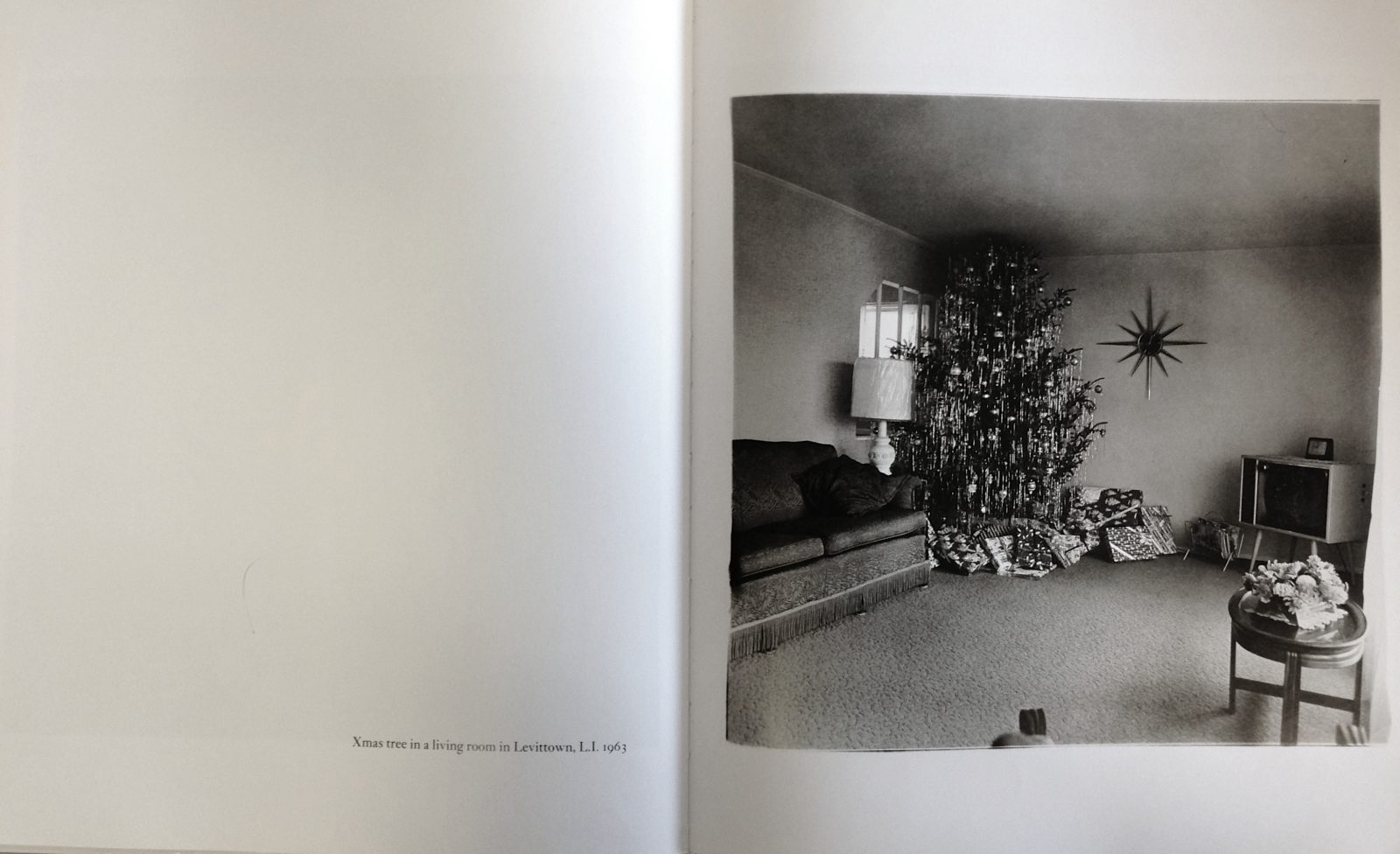I have always been fascinated by the work of Diane Arbus. Following several visits to the groundbreaking show Revelations at the V&A, the UK’s first comprehensive survey of her life and work, Arbus’s original approach to photography confirmed for me that the power of her vision remains embedded in her photos.
I was asked to respond to the question ‘what makes a good photograph’ in the run up to Christmas, and I immediately had in mind Arbus’s photo, Xmas tree in Living Room, Levittown L.I. 1963. Since the V&A show in late 2005, this photograph seems to reemerge from memory every Christmas. The power and enigma of the photo to stay in the mind’s eye, present when not present, not as a fading memory but as a fixed element, is one component of what makes it a good photograph. A good or great photograph moves beyond cataloguing traces of the real world, beyond an idea of something that existed in the past, as it becomes part of the present also.
In 1962 Arbus had begun experimenting with a square format (2 1/4-inch twin-lens reflex) camera, and that decision created the distinctive, formal and classical black and white style of her work. In 1963 and 1966 she received a Guggenheim Fellowship to work on her project ‘American Rites, Manners and Customs’ where she would develop her more personal work and the blueprint for her unique visual language. Arbus’s trick was her ability to see the extraordinary in the ordinary, and at the same time make strange the elements of the familiar; Freud’s notion of the uncanny is at play in her work. Arbus’s fascinating take on the everyday is captivating, at times shocking in its clarity, a brave celebration of the real, of ordinariness, and of the imperfect. Susan Sontag wrote well on the contradictions in Arbus’s technique, negotiated via her ‘cruel’ lens.
My personal fondness for Christmas is possibly why I think of this photo every year, as this is one place I would not like to spend the holidays. There is a sense of loneliness and isolation, and biographical writings on Arbus speak of her episodes of depression and sense of separateness. The image is also unusual for Arbus in its absence of people. We naturally think of Christmas as a family affair, focused on children, and a coming together of clans. No one is home in the Levittown living room, apart from the photographer. There’s no sense that something is about to happen as Arbus’s photo remains heavy with inactivity.
The bare and uninviting room, an expanse of dull carpet in the foreground, is also filled with details; a huge Christmas tree rammed into the corner, surrounded by neatly wrapped and arranged presents. A TV in the opposite corner is almost as important, if not in scale then in symbolism. Consumerism and mass production in 1960s America is also the subject; a lampshade on a side table is still wrapped in the plastic it was purchased in, reflecting a desire for newness and sterility. This living room is in Levittown, a Long Island suburb that takes its name from Levitt and Sons, a building firm who in this rush for newness mass-produced and speedily constructed homes after the war.
Quoted in the 1972 book Diane Arbus: An Aperture Monograph, Arbus described her ability to reveal the hidden and bizarre elements of life via her photos:
“I do feel I have some slight corner on something about the quality of things. I mean it’s very subtle and a little embarrassing to me, but I really believe there are things which nobody would see unless I photographed them.”
Arbus felt inspired to photograph the amazing, strange people and places in and around New York to reflect a social history of the era, and of that unique urban habitat where Arbus was born, worked and died before her time. She was devoted to photography and its possibilities without a preconceived agenda. Her skills seem to emanate through an instinct of how to capture an image, her compositions are sometimes awkward, but that just makes them more seductive.
In her portfolio Box of Ten Photographs, which comprised of what she felt were the ten images most representative of her oeuvre she included Xmas tree in a living room, Levittown, L.I.. Arbus’s extraordinary photograph is compelling and its ‘strangeness’ continues to seduce me.

